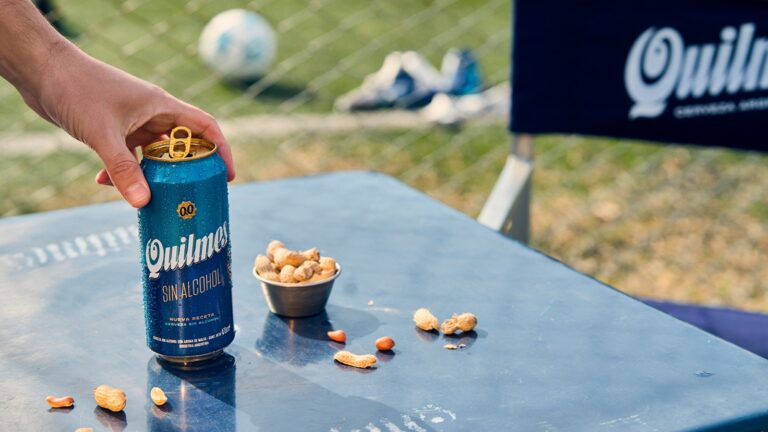Recently, I wrote a piece for La Nación about the trend of low-alcohol or completely non-alcoholic beverages. The focus was on wine, which is only now figuring out how to create alcohol-free versions that taste and feel like wine. Beer took a backseat in that story, but there’s plenty to discuss about 0.0 beer—let’s dive into this topic as a spin-off.
The first thing to note is that, following a clear global trend, 0.0 beer is carving out a significant role in the daily lives of Argentinians. Local statistics provided by brewing giant CCU show that nearly one in three beer consumers (28%) drank at least one non-alcoholic beer in the last 30 days.
Driving the growth of non-alcoholic beer are young people: “75% of young Argentinians say they want to reduce their alcohol consumption, and 6 out of 10 people aged 18 to 25 find low or no-alcohol options appealing,” says Matias Canzani, Marketing Manager for Beers at CCU.

According to Eugenio “Cucu” Raffo, VP of Marketing at Cervecería y Maltería Quilmes, the rise of 0.0 beers is supported by the fact that today’s offerings can recreate the flavor and texture of a conventional beer. “The myth that non-alcoholic beer isn’t real beer is gone—people now see that the taste, aroma, and body are identical to their favorite beers. Non-alcoholic beers allow beer fans to enjoy their favorite drink during moments when they don’t want alcohol, without losing the unique experience beer provides.”
Beyond its improved quality, non-alcoholic beer is growing due to various factors. A key driver is the increasingly strict blood alcohol limits in districts like Buenos Aires Province, where the limit is zero. Campaigns like Heineken 0.0’s TV spot featuring a traffic police officer highlight this point.
Low-Calorie Appeal
Another contributing factor—observed across all non-alcoholic beverage categories—is the association of less alcohol with fewer calories. While alcohol reduction is sometimes offset by more sugar, this isn’t necessarily the case for beer. “Heineken 0.0 positions itself as a lighter option within the market,” notes Canzani. “With just 21 kcal per 100ml, it contains half the calories of other non-alcoholic beers and fewer than many sugary beverages. Plus, it has no added sugar or artificial additives, making it a more natural and balanced alternative. While a soda contains 10.6g of sugar per 100ml, Heineken 0.0 has only 1.3g, complying with European regulations that categorize it as low-sugar.”

“Today, non-alcoholic beers offer an excellent option for those moments when people prefer to avoid alcohol but still seek the social experience and flavor of beer,” adds Raffo. This is reflected in the Argentine market’s numbers: “2024 was a strong year for non-alcoholic beer, consolidating the category with our three brands (Quilmes 0.0%, Stella Artois, and Corona), which grew 45% between 2023 and 2024. For 2025, we aim for a segment growth of around 40%.”
Another major player in the market sees similarly positive trends: “Currently, Heineken 0.0 accounts for 3% of Heineken’s total sales in Argentina, and the goal is to continue growing to reach levels seen in other countries,” explains Canzani.
What’s a possible horizon? In Spain, for example, 0.0 beer already represents 14% of the beer market and continues to grow. According to estimates from beverage agency IWSR, globally, non-alcoholic beer will grow by 2% annually from 2023 to 2027. “The non-alcoholic beer market in Argentina has shown sustained growth in recent years,” Canzani notes. “In 2023, the category represented 0.3% of total beer sales in the country. By 2024, that share rose to 1.3%, indicating significant growth in an emerging segment.”

Raffo adds: “It’s clear there’s a tremendous growth opportunity—not only because there are concrete examples in other markets where the non-alcoholic category is a reality, but also because the Argentine palate is increasingly in tune with the taste of beer.”
Still, obstacles remain for alcohol-free drinks. “There are still social barriers and stigmas around their consumption,” warns Canzani. “21% of young people aged 18 to 26 have hidden their choice of non-alcoholic beer due to social pressure, while more than a third have felt pressured to drink alcohol in social situations.”
There’s still a long road ahead.

